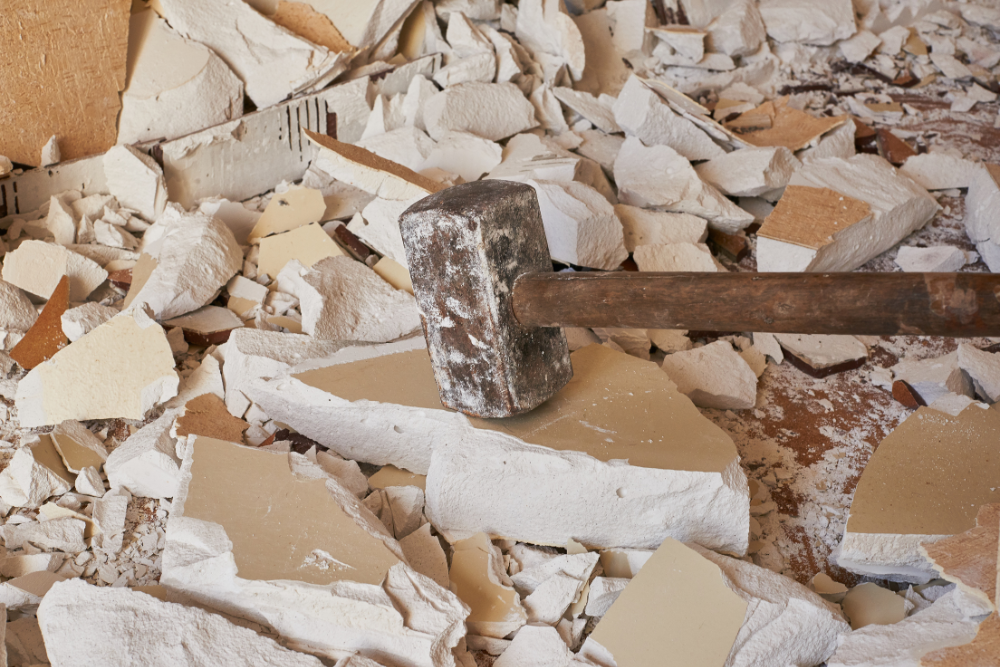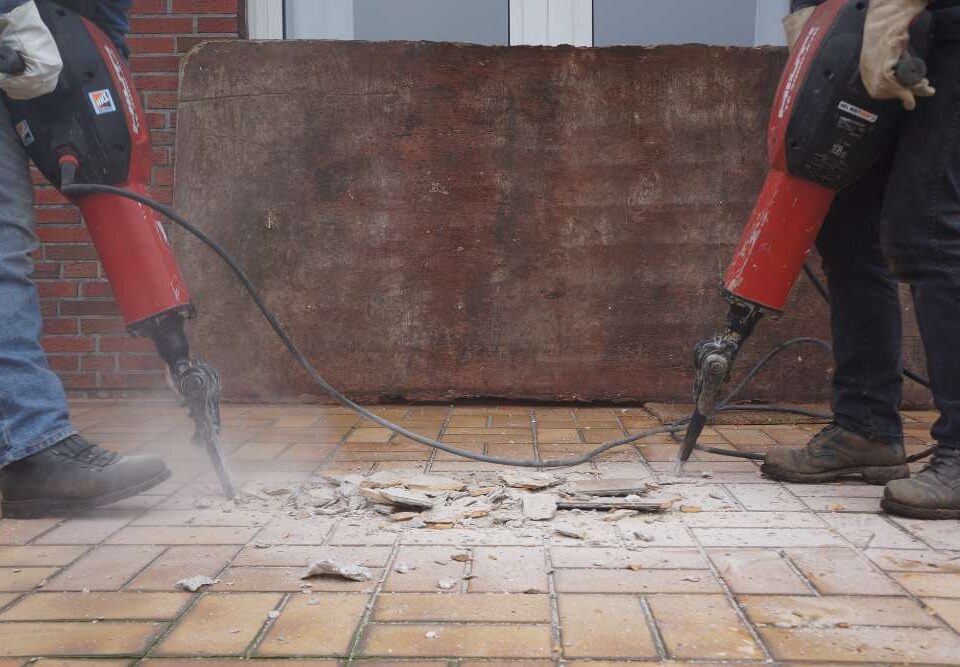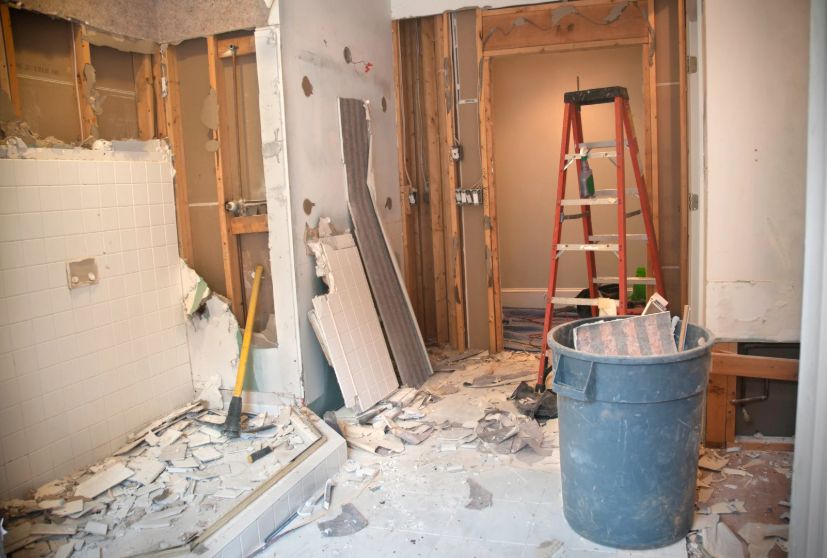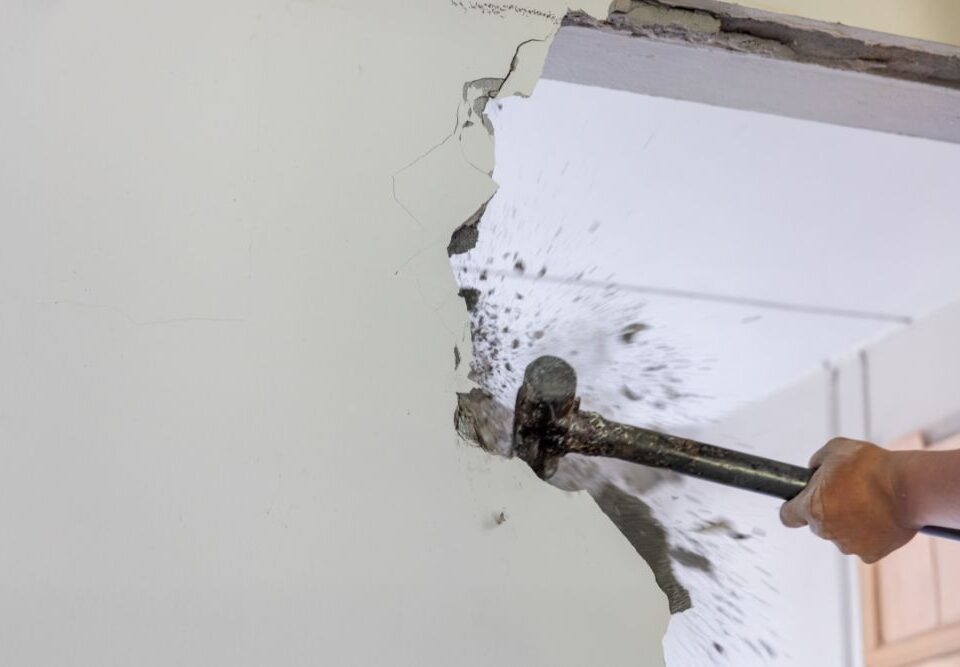
How Demolition Cleanup Improves Your Property’s Value
September 3, 2025
Top Reasons to Hire a Furniture Removal Service
September 3, 2025Concrete Removal for Property Improvements
Efficient Concrete Removal for Residential Spaces
Removing concrete from your property can be a challenging yet transformative task. Residential spaces often contain outdated driveways, patios, or sidewalks that no longer serve their purpose or match the aesthetic of your home. Tackling concrete removal requires careful planning to avoid damage to surrounding areas. By approaching the process systematically, you can ensure that heavy machinery or hand tools are used safely, and that debris is properly managed. This preparation not only safeguards your property but also minimizes potential hazards during the removal process. The satisfaction of opening up your space for new projects or landscaping is worth the effort, giving your home a fresh canvas to work with.
Careful handling and professional insight can make all the difference in residential concrete removal. Even seemingly simple projects can reveal hidden complications such as reinforced steel, uneven surfaces, or delicate surrounding structures. Evaluating the best method for breaking up and hauling concrete ensures the process is both safe and efficient. By considering these factors ahead of time, you can avoid common pitfalls and ensure a smooth transition from old concrete to improved, functional spaces ready for upgrades. Planning with precision allows for both speed and peace of mind.
Transforming Commercial Properties Through Concrete Removal
Concrete removal in commercial properties often involves larger-scale projects such as parking lots, sidewalks, or storage areas. These spaces must be cleared efficiently to minimize disruption to business operations. Commercial concrete removal projects can require heavy-duty equipment and specialized techniques to handle the volume and weight of concrete safely. Ensuring that the work is done carefully prevents structural damage and allows for seamless renovations or expansions. Removing concrete in a controlled and methodical way opens opportunities to redesign your commercial space with functionality and safety in mind.
Large projects can also benefit from experienced teams who understand local regulations, safety standards, and disposal requirements. Proper debris management is critical in commercial settings to prevent accidents and maintain compliance with environmental guidelines. By planning ahead and implementing structured strategies, you can remove concrete effectively while preparing the area for new installations or aesthetic improvements. This proactive approach minimizes downtime and ensures your business space is ready for the next phase of property development.
Safety Considerations During Concrete Removal
Safety is paramount during any concrete removal project. Whether working with residential patios or commercial parking lots, concrete demolition can pose risks such as falling debris, dust inhalation, and heavy-lifting injuries. Wearing proper personal protective equipment and ensuring all workers are trained in safety protocols are essential steps in preventing accidents. Understanding the physical demands and potential hazards associated with concrete removal allows you to implement measures that reduce risk while maintaining efficiency. Safety considerations are integral not only to protect those performing the work but also to shield surrounding structures and landscaping from accidental damage.
Planning the removal process with safety in mind also involves evaluating tools and techniques that minimize physical strain. For instance, using mechanical breakers or saws reduces manual labor and accelerates the demolition process. Managing dust and debris through containment strategies ensures that nearby areas remain clean and safe. Prioritizing these precautions creates a controlled environment in which concrete removal can proceed smoothly, allowing property improvements to move forward without unnecessary setbacks.

Eco-Friendly Approaches to Concrete Disposal
Proper disposal of concrete is critical for environmentally conscious property improvements. Recycling concrete into aggregate for new construction projects helps reduce waste and preserves natural resources. Instead of sending old concrete to landfills, sorting and processing it for reuse contributes to sustainable practices. Incorporating eco-friendly disposal methods not only benefits the environment but can also reduce costs associated with removal. By adopting recycling strategies, property owners play a role in minimizing environmental impact while enhancing the overall appeal of their space.
Eco-conscious concrete removal also includes separating debris for repurposing or donation where applicable. This approach ensures that construction waste is managed responsibly while adhering to local regulations. Planning for sustainability during removal projects reflects a commitment to green building practices and community stewardship. By embracing environmentally friendly techniques, you create a balance between improving your property and supporting long-term ecological health.
Tools and Equipment for Effective Concrete Removal
Selecting the right tools and equipment is crucial for a smooth concrete removal process. Small residential projects may require hand tools like sledgehammers, chisels, and pry bars, while larger commercial projects often demand jackhammers, skid steers, and concrete saws. Using appropriate equipment reduces the physical strain on workers and speeds up the removal process. Assessing the scale of the project ensures that the chosen tools match the demands of the task. Proper equipment also enhances precision, minimizing accidental damage to surrounding structures and landscaping.
Regular maintenance and proper handling of machinery are essential to prevent delays or injuries. Knowing which tools to deploy and how to use them safely allows the removal team to tackle concrete efficiently. Combining manual techniques with mechanical solutions creates a balance between control and speed, enabling removal projects to proceed smoothly. Ultimately, thoughtful equipment selection contributes to a safer and more effective demolition process, paving the way for new property improvements.
Planning and Preparation for Concrete Projects
Proper planning is the backbone of successful concrete removal. Evaluating the area, identifying obstacles, and creating a step-by-step strategy ensures that projects proceed without unexpected delays. Planning involves determining the volume of concrete to remove, assessing access points for equipment, and identifying nearby utilities or landscaping that require protection. A well-prepared plan minimizes risks, enhances efficiency, and helps allocate resources effectively. By taking the time to prepare thoroughly, property owners and contractors can avoid common challenges that arise from hasty demolition.
Preparation also includes organizing waste disposal and logistics for hauling away debris. Scheduling the removal in phases allows for smoother workflow and better management of heavy materials. Proper preparation ensures that safety standards are upheld while maintaining a clear path for improvement projects. With a thoughtful plan in place, concrete removal becomes a manageable, controlled process that lays the groundwork for successful renovations and aesthetic enhancements.
Enhancing Outdoor Spaces with Concrete Removal
Concrete removal is often the first step in transforming outdoor spaces into functional and visually appealing areas. Replacing old patios, driveways, or walkways opens opportunities for new landscaping, custom hardscaping, or improved drainage solutions. Removing concrete allows property owners to rethink layouts and create spaces that better suit lifestyle needs. This transformation can elevate the overall appearance of the property while increasing its usability and value.
Reimagining outdoor spaces also means considering materials that complement existing structures and garden designs. Whether installing decorative pavers, natural stone, or permeable surfaces, clearing away old concrete creates a blank canvas for creative solutions. Strategic removal combined with thoughtful planning can significantly enhance both the aesthetic and practical qualities of outdoor areas, making them enjoyable for family use, entertaining, and long-term property value.
Managing Large-Scale Concrete Removal Challenges
Large-scale concrete projects, such as foundations, parking lots, or extensive patios, require specialized techniques to handle weight and volume efficiently. Coordinating removal crews, equipment, and debris disposal is essential to maintain a smooth workflow. Challenges such as reinforced concrete, uneven surfaces, or tight access points demand careful consideration to avoid delays and damage. Implementing a systematic approach ensures that projects remain on schedule while maintaining safety standards.
Professional management of large-scale removal involves anticipating potential obstacles and adjusting methods accordingly. Using precise cutting, breaking, and hauling strategies allows crews to handle heavy concrete safely. Effective project management also includes timing deliveries and pickups of equipment and debris containers to maintain an organized site. Addressing challenges proactively ensures that even the most demanding concrete removal projects are completed efficiently and effectively.
Cost Considerations in Concrete Removal
Understanding the costs associated with concrete removal helps property owners plan budgets and make informed decisions. Expenses can vary based on the size of the project, complexity, and disposal requirements. Factoring in labor, equipment rental, and hauling fees provides a realistic estimate of overall costs. Considering cost-saving strategies, such as partial DIY demolition combined with professional hauling, can help balance quality and affordability. By evaluating cost factors upfront, property owners can avoid unexpected expenses and streamline the removal process.
Cost management also involves prioritizing safety and efficiency, ensuring that cheaper options do not compromise the quality of work. Comparing quotes from professionals and assessing materials for recycling opportunities can further optimize budgets. Thoughtful financial planning allows for a smoother project experience while maximizing the value of property improvements. Transparent consideration of costs ensures that concrete removal projects are both practical and beneficial in the long term.
Integrating Concrete Removal with Renovation Projects
Concrete removal often coincides with broader renovation initiatives. Clearing old concrete enables the installation of new patios, driveways, or commercial walkways that align with updated designs. Coordinating removal with renovation timelines ensures minimal disruption and efficient use of resources. Integrating these tasks allows for seamless progress and smoother project execution, ensuring that the property is ready for immediate improvements once the concrete is cleared.
Renovation integration also requires communication between teams handling demolition, construction, and landscaping. Planning the sequence of removal and installation tasks enhances productivity and reduces idle time. By aligning concrete removal with overall renovation goals, property owners can achieve cohesive results that enhance both function and appearance. This holistic approach transforms spaces efficiently and sets the stage for lasting property value enhancements.
Conclusion
Concrete removal is an essential step in achieving meaningful property improvements. From residential patios to large commercial areas, effective removal opens opportunities for redesign, landscaping, and functional upgrades. Considering safety, environmental impact, equipment, and planning ensures projects proceed smoothly while minimizing risk and maximizing benefits. The transformation achieved through proper concrete removal can elevate both aesthetics and usability, preparing spaces for future development.
For reliable and professional support with debris and construction material removal, North Bay Junk Removal in Santa Rosa, CA offers comprehensive services. Their team ensures every project is handled efficiently and safely, providing peace of mind during property improvement endeavors. Reach out to North Bay Junk Removal at 707-478-6817 for expert junk removal solutions that help turn your vision into reality while managing all debris responsibly.




